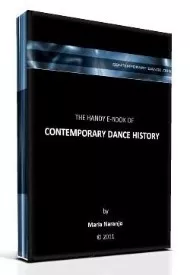WILLIAM FORSYTHE
William Forsythe (New York City, 1949) is related to contemporary dance, because his choreographic work displays an assorted exploration of modern dance codes. Though, he is most commonly considered as a ‘neoclassical’ choreographer, mainly because the foundation of his pieces is constructed with (kind of) vocabulary from classical ballet and ballet trained dancers.
Forsythe receives formal ballet and modern dance training at different places like the Jacksonville University, the Joffrey Ballet and the School of American Ballet, having the opportunity to learn from renowned teachers like Maggy Black, Finis Jung, Jonathan Watts, Meredith Baylis, William Griffith, Leon Danelian, Mme. Peryaslavec, and Pat Wilde.
Around 1974, John Cranko invites him to join the Stuttgart Ballet, and gives him the opportunity to show his first choreographic experiments. Years later he is engaged to direct the Frankfurt Ballet (1984–2004) and after its dissolution he achieves to create The Forsythe Company (2005–present).
William Forsythe is considered as a continuator of Balanchine’s work, because of his way of working with classical ballet from a contemporary aesthetical perspective. It is said that he places classical ballet richness and possibilities in a XXI century dynamic.
Spreading all kind of styles and methods developed by other choreographers, he has conquered a wide spectrum of audiences, including the majority of the official European scenes.
His choreographies break bounds and demand a widening of perspective, as much from his dancers as from the audience. They display a freedom of thought that seems to be interested in all aspects of contemporary culture and that is expressed with precision and elegance.
Organization of scenic space, lightning and music break the usual rules. Extremely technically trained dancers are stimulated by the challenges he defines and participate actively in the creative process.
Have a look at this fragment: “One flat thing reproduced” by William Forsythe:
Once I heard Forsyhte (in a public interview) saying that he was very free to think and create but he also had his strategies to ‘keep the shop running’. As many contemporary artists, he seems to admit that creation is determined both by the commercial, massive expectations and the imaginary, singular aesthetical ideas.
Maybe this is why, when you browse over all his work, you find a combination of rare pieces where he seems to express more of his free mental exploration, alternated with intense pieces of pure dance (i.e. Herman Scherman,1992; Quintett,1993), that seem to exist to reassure his public.
Some of the latest works extend his research on the performative potentials of dance and an investigation of a definition for the concept of ‘choreography’. According to his words, if we put together some dance, some participation and some sculpture, we create choreography.
Being coherent and consequent with this statement seems to have led him to a series of experiments in which dance is put in relationship with visual arts or where the audience becomes a part of the piece.
William Forsythe puts it this way: “choreography is a ‘fundamental state of organization’ and can take all kinds of forms”; he adds that choreography is not bound to dance, nor dance is bound to choreography and that there are many ways to think of the concept (choreography).
Other than his redefinitions and experiments, he also seems to be interested in working for the recognition of dance as a major art. Though he expresses that there’s really very few means to transmit what the consciousness of dancing or the act of choreographing is, he seems to be in a search for finding ways to make ordinary people know the dimensions of what he calls ‘the awareness of the dancer’ and the fact that dancing implicates a difficult, sophisticated compositional process. (Interview for dance-tech.net)
Here’s the whole interview in case you have the time:
You can find a great display of William Forsythe’s ‘choreographic objects’ at his website, together with a complete schedule of his current activity.
If you ask me, I’d tell you William Forsythe is an absolute ‘don’t miss’, just for the tremendous exploration of movement possibilities he achieves with his fantastic dancers.
Return from William Forsythe to Ballet History.
Return from William Forsythe to Contemporary Dance Home Page
The handy e-book of CONTEMPORARY DANCE HISTORY:
The Dance Thinker is our occasional E-zine. Fill in the form below to receive it for free and join us.
Read:
"The Dance Thinker"
BACK ISSUES
Post contemporary dance announcements (workshops, auditions, performances, meetings and important news... it is free.)



